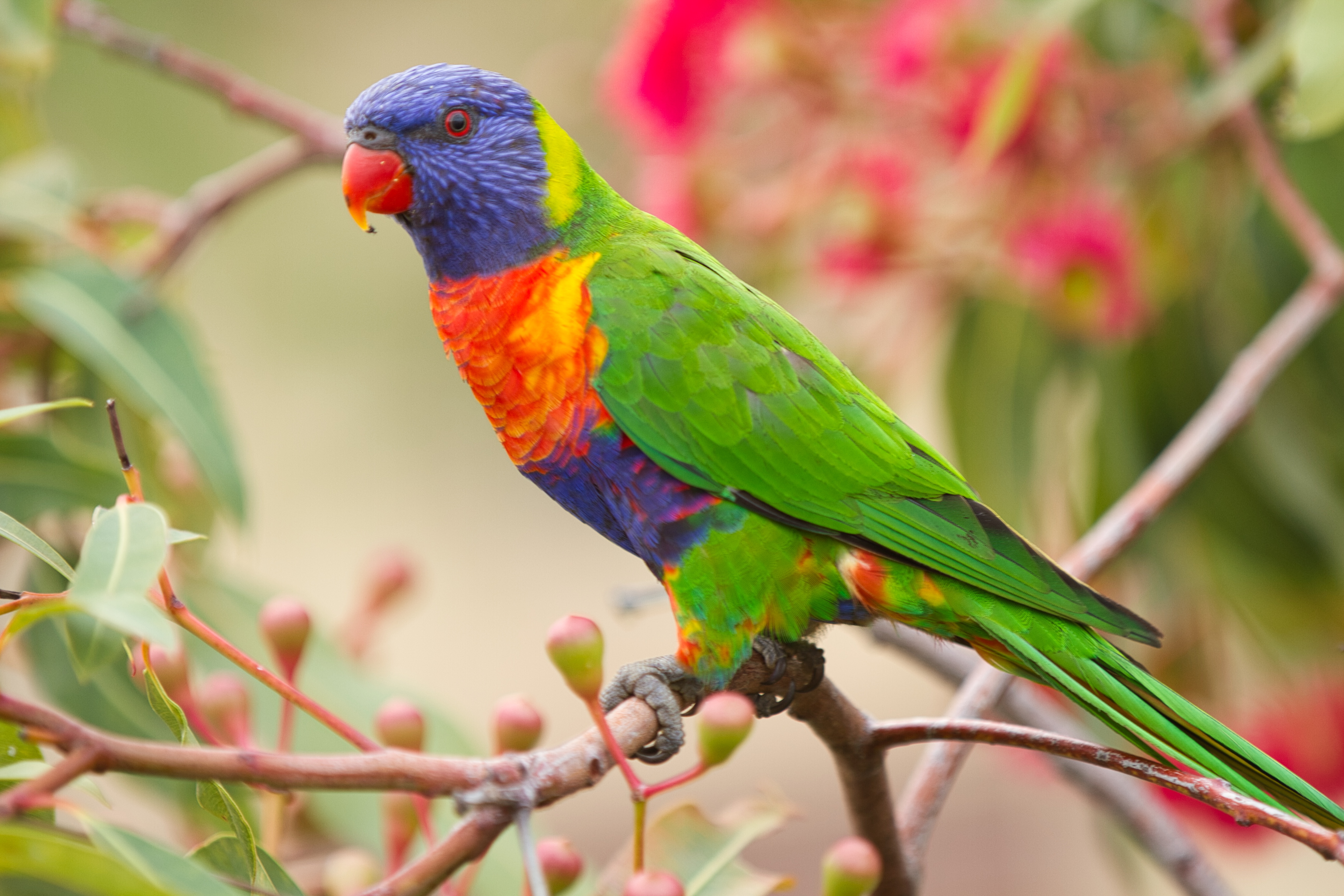
22 June 2025
The Rainbow Lorikeet, a flamboyant and energetic bird, is renowned globally for its unmistakable vibrant colouring and engaging personality, making it a favourite in aviculture and as a companion bird. Their resilience and hardiness also make them an ideal choice for both novice and experienced birdkeepers.
In the wild, the Rainbow Lorikeet is Australia's most common bird, thriving in urban environments by utilizing backyard feeders, bird baths, and nest boxes. They consume a diverse range of foods, including nectar, pollen, fruit, and even occasionally minced meat. Their numbers have been boosted by the widespread planting of native trees like Grevillea, which provide a beloved food source. These birds are also known for their pugnacious nature, often displacing smaller lorikeet species and other birds at feeding sites or when seeking nesting hollows.
In captivity, Rainbow Lorikeets are the most commonly kept and bred lorikeet species worldwide. Sexing these birds accurately requires DNA or surgical means, as their chest colour, sometimes suggested as a marker, is not a reliable indicator.
For housing, aviculturists commonly use suspended aviaries, which efficiently manage their liquid faeces and simplify cleaning, as hygiene is crucial. A high-pressure washer is often used to maintain cleanliness. An aviary length of at least 4 meters is recommended to allow pairs ample space for flight and to burn off their boundless energy. Enrichment can be provided through toys, chains, and wet branches from flowering native trees like Callistemon and Grevillea. They enjoy bathing, so a large shallow water bowl is a beneficial addition. For breeding, it's best to house them as a single pair per aviary.
Their diet in captivity has evolved; while homemade mixes were once common, commercially manufactured, specially formulated wet and dry diets are now widely available. Foods like sunflower seeds and millet are generally not recommended. Keepers often adjust feeding regimes seasonally, with some offering commercial wet mix along with greens, fruit, and vegetables during warmer months, and blending fruits and vegetables into wet mixes in winter. Easy-to-clean dishes, like stainless steel, and frequent water changes are essential for hygiene.
Rainbow Lorikeets are opportunistic breeders, laying two to three eggs that incubate for 23–25 days. Chicks fledge at around 10 weeks, and regular cleaning of nesting material is important due to their liquid excrement. The development of various colour mutations, such as Pied, Lutino, Blue, and Parblue, adds further appeal and possibilities for enthusiasts.
Overall, the Rainbow Lorikeet is an attractive and engaging aviary subject, offering a rewarding experience for those venturing into lorikeet keeping.